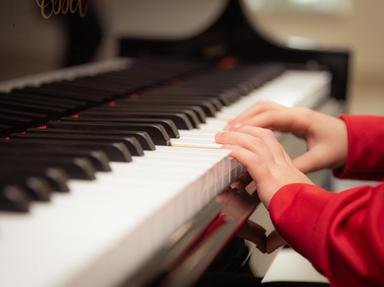Quiz Answer Key and Fun Facts
1. Originally, what were the strings of a violin made from?
2. One of the highest pitched instruments in an orchestra is the piccolo, which belongs to which instrument group?
3. Almost all cymbals are made from alloys of which one the following metals?
4. What is the name of this member of the brass family that you might be interested in learning to play?
5. What material is the body of most oboes made from?
6. If you go and watch an orchestra play, what type of piano are you most likely to see being played?
7. Which of the following musical instruments is being played in this image?
8. The sweet sound of the bassoon may come from the fact that maple wood is commonly used when making this instrument.
9. The xylophone is part of the percussion family of musical instruments.
10. From which of the following metals are most saxophones made?
Source: Author
dcpddc478
This quiz was reviewed by FunTrivia editor
NatalieW before going online.
Any errors found in FunTrivia content are routinely corrected through our feedback system.


